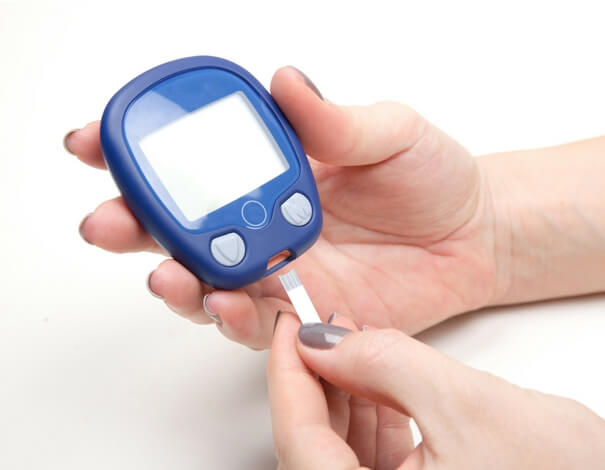PREDIABETES: FIVE WAYS TO PREVENT ITS PROGRESSION TO TYPE 2 DIABETES
Diabetes is a highly prevalent chronic disease in industrialized countries. In 2022, it was estimated that over 5.7 million Canadians were living with diabetes. And if we add to that number all the people with prediabetes, that’s about 11.7 million people, or nearly one in three Canadians!What is prediabetes?
Prediabetes is characterized by blood sugar levels that are higher than normal, but not high enough to be diagnosed as diabetes. Most people with prediabetes have few or no symptoms. Often, they only learn they have it when they go for routine blood work, for example, when they go for diabetes screening, as is recommended for all Canadians over the age of 40.Why is prediabetes a concern?
Most people with prediabetes will become diabetic if they don’t do anything about it. Prediabetes is a wake-up call! It is urgent that you make changes to your lifestyle to prevent, or at least delay, the onset of type 2 diabetes.
Prediabetes can develop over the course of several years before turning into type 2 diabetes. Since type 2 diabetes causes few symptoms before becoming very serious, a number of years can pass before a diagnosis is made.
When blood sugar levels are too high for a long period, this can lead to numerous complications, including heart disease, stroke, kidney failure, loss of feeling in the hands and feet, erectile dysfunction, or eye damage. It is not unusual for complications to already be present when type 2 diabetes is finally diagnosed.
The good news is that by making the appropriate lifestyle changes, you can reduce your risk of prediabetes developing into type 2 diabetes by nearly 60%.
What can you do to reduce your risk of prediabetes and type 2 diabetes?
1) Maintain a healthy weight
2) Eat healthy
3) Take part in regular physical activity
4) Don't smoke, and avoid second-hand smoke
5) Manage your stress levels
Maintain a healthy weight
Being overweight is the main risk factor for prediabetes. Studies have shown that sustained loss of 5% to 10% of total body weight helps lower the risk of developing diabetes. Aim for a healthy lifestyle that you can keep up over the long term.
Eat healthy.
Fill half your plate with colourful fruits and veggies, one quarter with fibre-rich whole grains, and one quarter with protein-rich foods. Limit your consumption of red meat and deli meats. Include more plant-based proteins in your diet. The Mediterranean and DASH diets are good examples to follow. Limit portion size, serve your food on smaller plates, and take at least 20 minutes to finish your meal. Reduce the amount of fat, salt, and refined sugar you eat. Limit your alcohol intake. Opt for water when you’re thirsty.
Take part in regular physical activity
Be active for at least 30 minutes a day. Your exercise periods can be divided up over the day if you prefer. Avoid staying seated for more than one hour at a time. Stand up regularly to stretch your legs. Find activities that you enjoy and that you can do with friends or family members. When it comes to physical activity, the more the merrier! Physical activity helps you maintain a healthy weight and build your muscles, which will work more efficiently to use up your blood glucose.
Don’t smoke and avoid second-hand smoke
Diabetes and smoking are two leading risk factors for cardiovascular diseases. Many studies have shown that smokers are at greater risk of developing diabetes than non-smokers or former smokers.
Manage your stress levels
Stress triggers the release of hormones, including cortisol, which causes an increase in blood sugar. In people who are predisposed to diabetes, chronic exposure to stress leads to greater and more persistent increases in blood sugar levels. It has been shown that the more stressed you are, the less active you are and the more you eat. You can break this cycle by identifying the sources of your stress. Try to get between 7 and 9 hours of sleep per night. Take a moment to relax before going to bed. And be physically active! Physical activity has a wonderful effect on stress and mood.

Make changes one step at a time!
A diagnosis of prediabetes can be a shock. But remember that it’s also a wake-up call that can be a great springboard for taking control of your health. Changes that are beneficial for lowering your risk of developing diabetes are just as helpful for reducing the risk of heart disease and cancer.
If you need to make several changes to your lifestyle, don’t try and do it all in one go. There’s a good chance you’ll get discouraged and give up altogether. Instead, take the time to assess your lifestyle and start with one element to work on. Some people prefer to begin with the thing they feel will be the easiest to change, while others may want to target the element they feel is most harmful to their health.
Set yourself simple and realistic goals. Start slowly and gradually build on your changes. Buy a new vegetable this week, and work it into your meals. Walk for five extra minutes or change your route so it ends with a hill to climb. The possibilities are endless!
Surround yourself with positive people. Feel free to consult your pharmacist, or a nutritionist or kinesiologist to help you get on track. They will support you as you work to improve your health!
The pharmacy services presented in this section are offered by pharmacist owners who are affiliated with Uniprix. The pharmacists are solely responsible for the professional activities carried out during the practice of pharmacy. These services are offered in participating pharmacies only. Certain fees and conditions may apply.
* The information contained herein is provided for informational purposes only and is not intended to provide complete information on the subject matter or to replace the advice of a health professional. This information does not constitute medical consultation, diagnosis or opinion and should not be interpreted as such. Please consult your health care provider if you have any questions about your health, medications or treatment.




